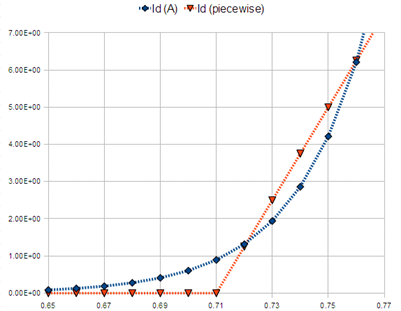Question
Question: The cut- in voltage for silicon diode is approximately: A) \(0.2\,V\) B) \(0.7\,V\) C) \(1.1\,...
The cut- in voltage for silicon diode is approximately:
A) 0.2V
B) 0.7V
C) 1.1V
D) 1.4V
Solution
The silicon diode allows the accepting of the large electric current at a particular voltage called forward voltage. This is the cut- in voltage . Below this voltage, the diode does not allow the accepting of the current and after this the flow of current increases rapidly.
Complete step by step solution:
The silicon diode is made up of the silicon which has the two terminals in it. One of the terminal circuit elements minimizes the current flow in the one direction which is the reverse bias and in the other direction it carries the current easily which is known as the forward bias.

The P type of the silicon diode possesses one extra hole in it. The battery in this diode is connected across the p−n junction which makes the diode as the forward biased. Hence it pushes the electrons moves from the n type to that of the p type whereas the holes moves from the p type to that of the n type. This silicon diode requires 0.7V to start the forward biasing and this is known as the cut in voltage.
Thus the option (B) is correct.
Note: The semiconductors like germanium and the silicon are mainly used for the purpose of the diode. The germanium diode is more advantageous when compared to that of the silicon diode. Since the germanium diode requires only 0.3V to start forward biasing the diode. And the schottky requires only 0.2V for forward biasing.
